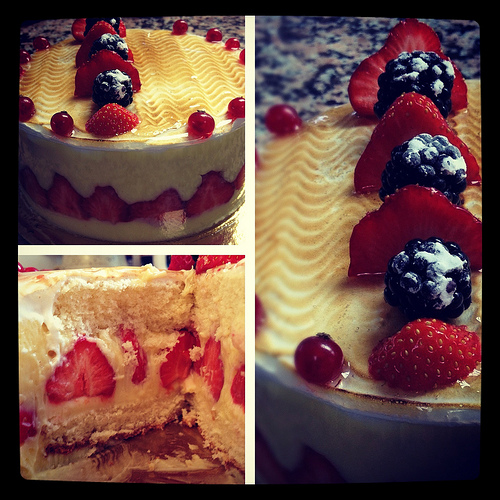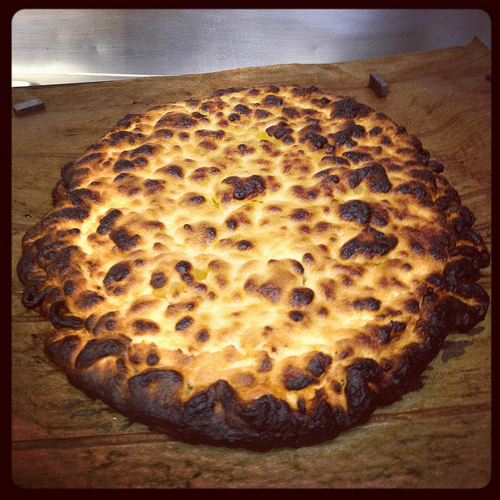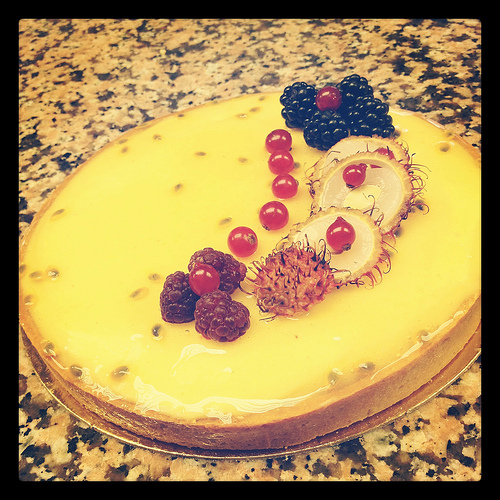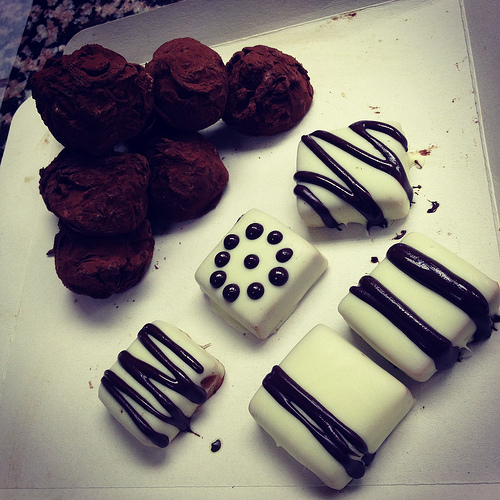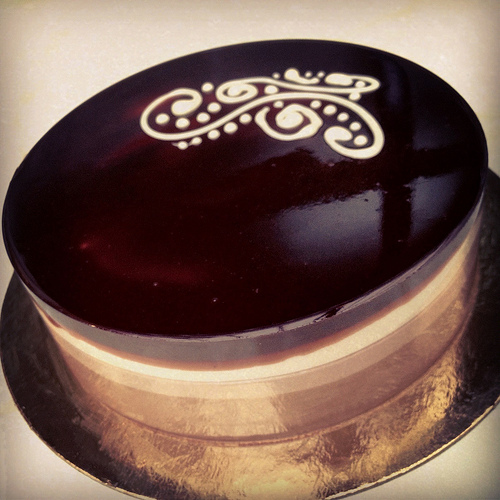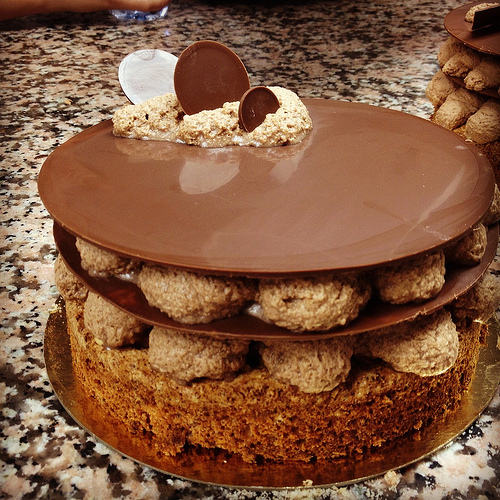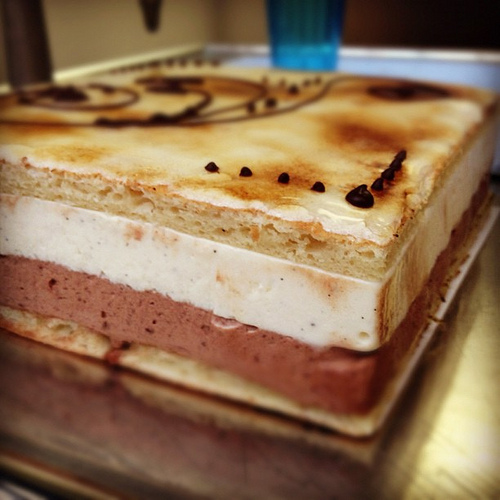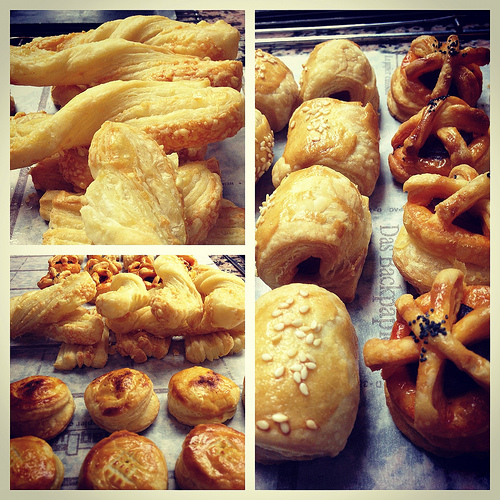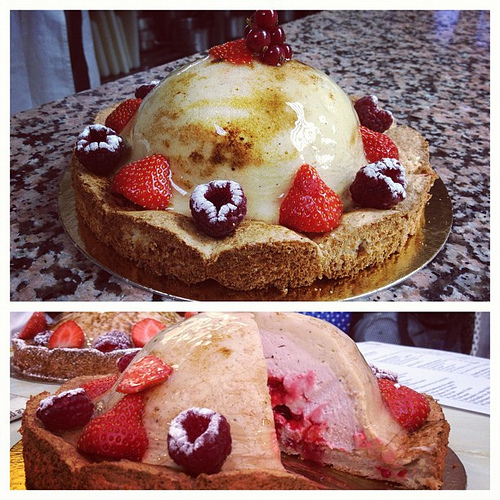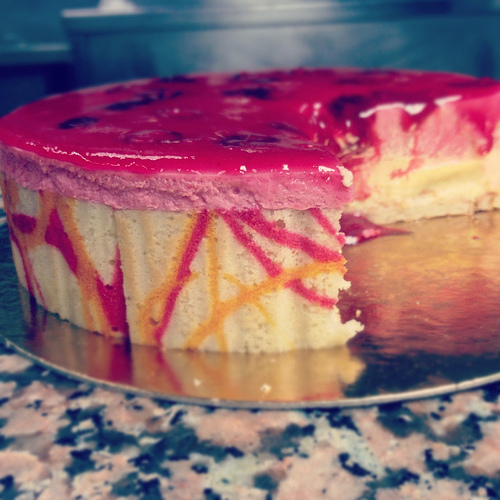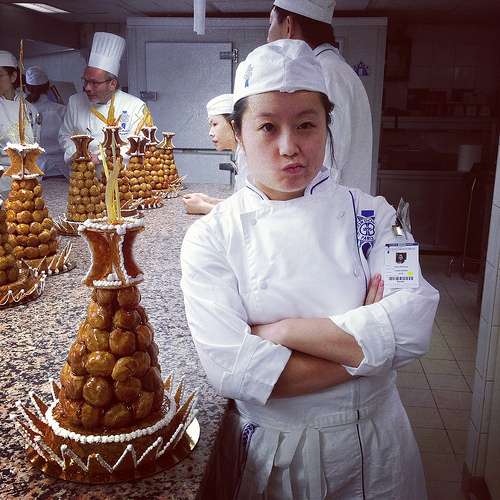The first few days of school I thought the chefs were all sort of the same: tall, and sometimes portly, stern, and very French. (The uniforms don’t help distinguish individuals either). But I’ve since realized they each have their own little quirks.
I think of the first chef we had as Grumpy Chef. To be fair he wasn’t feeling well that day, and it turns out he’s actually quite nice and funny. During demo after he’s put the day’s lesson in the oven, he likes to wax philosophical on why we’re at LCB and give us motivational speeches. It sounds silly but sometimes (see Scary Chef) it’s exactly what you need to hear going into your next practical.
Moody Chef was my favorite, before it became evident just how moody he really is. In demos he acts like a clown, cracking jokes and making funny faces. In practicals he’s constantly barking things like, “Dépêchez-vous!” (Hurry!) and, “Arretez!” (Stop!). Usually he’s kidding, but it’s hard to tell when he’s not. Some of my peers theorize that he is bi-polar. I can’t say I disagree.
My current favorite, then, is Cute Chef. Not only is he one of the younger chefs on staff (no more than mid-30s, I’d say), but also the general consensus amongst the overwhelmingly female Intensive Basic Pâtisserie class is that he has very pretty eyes. Cute Chef is to LCB as Gilderoy Lockhart is to Hogwarts. He doesn’t smile as much as he should could, but he has a very dry wit and sarcastic sense of humor. Oh, and his staff bio says he’s won multiple competitions for ice sculpting. Admit it: you’re intrigued.
In contrast we have a teacher I’ll call Scary Chef. (Honestly, though, I don’t even know his real name). Scary Chef rarely speaks, and when he does it’s only to say “OK” or “Non!” “Très bien,” or even “bien,” do not exist in his kitchen. Throughout the three-hour practicals he makes continuous rounds about the room, stopping only to peer over unsuspecting students’ shoulders. As you might imagine, the collective nerves in his presence are tangible.
Presentations at the end are even worse. Scary Chef appraises each student’s work one by one, and instead of offering constructive criticism like a normal instructor, he will place your biggest mistake in front of you (whether it’s an éclair that wasn’t filled enough or two cookies that aren’t the same size), look down at the substandard product, and then fix his steely gaze on you. Any thoughts of defending or justifying your pastry immediately disappear, leaving you only with the ability to meekly reply, “Oui, chef,” and then hang your head while wishing you could go crawl into a dark cupboard and stay there for the rest of the day.
Oops. Almost forgot about Nice Chef. Nice Chef never rushes you during practicals, and actually shows you how to do specific techniques, rather than glowering at you when you do them incorrectly (see above). He also has sort of a lazy eye, so it’s sometimes hard to tell when he’s addressing you.
Last is Tall Chef, who we haven’t officially had yet. All the instructors are pretty tall (and I don’t just mean relative to myself), but this guy’s chef’s hat practically brushes the ceiling. He’s one of the few who instructs both cuisine and pâtisserie, and often likes to pop into our demos when teaching the former. Allegedly it’s to pester Grumpy Chef, but I secretly think it’s because pâtisserie classrooms are kept air-conditioned while cuisine rooms aren’t. One of my peers complained that Tall Chef only gets away with such behavior because he’s good-looking (uncontested by me). Regardless, anyone is an improvement over Scary Chef.








